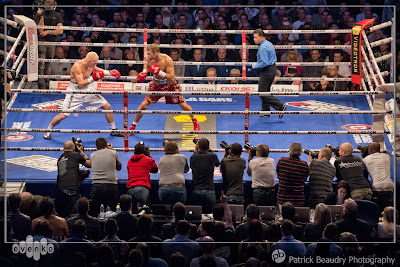Remote Cameras
 In certain cases, it is difficult, yet impossible to be located, at the ideal vantage point from where you'd like to be holding a camera. Other times, it's just more convenient to have several cameras positioned in different locations, while you shoot with a hand-held, from another unrestricted area. Perfect examples of this are; a goal cam during a hockey game, a cam positioned behind the backboard at a basketball game, ceiling during a boxing gala, etc...
In certain cases, it is difficult, yet impossible to be located, at the ideal vantage point from where you'd like to be holding a camera. Other times, it's just more convenient to have several cameras positioned in different locations, while you shoot with a hand-held, from another unrestricted area. Perfect examples of this are; a goal cam during a hockey game, a cam positioned behind the backboard at a basketball game, ceiling during a boxing gala, etc...It also prevents you from having to run around so much, as most remotes cover a huge range of field. Some venues have funky designs, and it's difficult to get from one section to another, without losing precious time in the crowd and/or elevators.
 During a recent concert, I had placed a camera behind the stage, aiming towards the crowd. This avoided me from having to go on stage, and risk disturbing the artist, stumble over cables, or worst, get in the way of pyros! In this post, we'll provide you with a few examples, along with detailed settings, and touch base on a few basic pointers of how to set your camera, what gear I personally use, and what my experience has been with wireless remotes. (Sorry for the iPhone photo)
During a recent concert, I had placed a camera behind the stage, aiming towards the crowd. This avoided me from having to go on stage, and risk disturbing the artist, stumble over cables, or worst, get in the way of pyros! In this post, we'll provide you with a few examples, along with detailed settings, and touch base on a few basic pointers of how to set your camera, what gear I personally use, and what my experience has been with wireless remotes. (Sorry for the iPhone photo)
I use the Pocket Wizard Plus III series remotes, for several reasons. For one, Their rugged construction comes in handy when fumbling lots of gear. I've yet to break one of these. They also have an impressive range of 500 Meters, 32 Channels, ease of use, and let's not kid ourselves... the fact that they are reasonably priced helps a lot in justifying having 4-5 of these! Don't forget, you need one unit to transmit the signal, and one unit for each other camera body you which to trigger. When using them to control studio lighting, you don't need as many, as you can set your heads to detect flashes to trigger the others instantaneously.
Tips
1. Make sure you disable the camera auto-sleep mode
2. Disable photo review, so it won't drain your battery as quickly
3. Safety is key, make sure all remote cams are "secured" with approved cables.
4. I usually set my zoom distance, calculate the Depth of Field, switch the lens to MF
(Manual Focus), and tape everything down, so it doesn't move with vibrations.
(Manual Focus), and tape everything down, so it doesn't move with vibrations.
Goal Cam
 Placing an expensive camera body in a "plastic" enclosure, to potentially face a 100mph slap-shot, is something quite discomforting, in my mind. Yet, it enables you to obtain some pretty spectacular pics! The enclosure usually needs to be approved by the federation (NHL, LHJMQ). Instead of placing the "transmitter" unit on the hand-held camera, and take simultaneous shots, I usually trigger with a foot switch, or push-button switch in my hand. This prevents taking too many unwanted shots, when your hand-held camera is capturing action away from the goalie. It's also a good idea to hook up your laptop to the goal cam, to ensure that you've angled it properly, and that the captured images are well framed.
Placing an expensive camera body in a "plastic" enclosure, to potentially face a 100mph slap-shot, is something quite discomforting, in my mind. Yet, it enables you to obtain some pretty spectacular pics! The enclosure usually needs to be approved by the federation (NHL, LHJMQ). Instead of placing the "transmitter" unit on the hand-held camera, and take simultaneous shots, I usually trigger with a foot switch, or push-button switch in my hand. This prevents taking too many unwanted shots, when your hand-held camera is capturing action away from the goalie. It's also a good idea to hook up your laptop to the goal cam, to ensure that you've angled it properly, and that the captured images are well framed.
